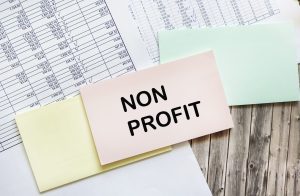Financial reporting is a critical and complicated process for any organization. It involves collecting, analyzing, and presenting financial data to different stakeholders, such as investors, regulators, customers, and employees. Financial reporting is a collaborative effort, as it needs input and review from different departments, such as accounting, finance, legal, and management.
Save Time and Reduce Errors
But this collaboration can also cause mistakes and inconsistencies in the financial reports, especially if the process is manual and depends on spreadsheets, emails, and documents. It is not uncommon to have unexpected consequences when sending the completed report to marketing. The marketing team may not have the necessary expertise to understand the financial data and may inadvertently misrepresent or misinterpret the information.
Mistakes in financial reporting can have serious consequences, such as fines, penalties, damage to your reputation, and loss of trust. A quick Google search will provide countless examples of companies having to restate financial statements due to reporting errors. So, it is very important to make sure that the financial reporting process is accurate, efficient, and compliant.
Automate Financial Reporting
One way to do this is to use solutions that automate the creation of the annual/quarterly financial reports. These solutions can offer many benefits, such as:
- Saving time and resources to prepare the financial reports, with a solution that can automatically collect, consolidate, and format the financial data from different sources. This means you don’t have to spend hours or days manually entering, checking, and adjusting the data, and you can focus on other tasks that add more value to your organization.
- Improving the accuracy and consistency of the financial reports, as the solutions can eliminate human errors, such as typos, incorrect calculations, and transposition. You can avoid costly and embarrassing mistakes that can affect your credibility and performance, and you can ensure that your financial reports are reliable and trustworthy.
- Streamlining the teamwork and communication aspects by offering real-time updates, history tracking, feedback, and approval workflows. This enables you to collaborate more effectively and efficiently with your colleagues, executives, and third parties like auditors. You can keep everyone on the same page and informed about the progress and status of the financial reports.
- Making sure that the financial reports are compliant and secure, some solutions can follow the latest accounting standards, regulations, and policies, and all of them make it a priority to protect the financial data from unauthorized access and change. Protecting you from legal and regulatory risks that can harm your reputation and bottom line and ensure that your financial data is safe and confidential.
However, Not All Solutions Are Created Equal
When you are looking for a solution that can automate your financial reporting process, you should consider some key characteristics, such as:
- Flexibility: The solution should be able to adapt to your specific business needs and preferences, such as the type, format, and frequency of your financial reports, the data sources, and systems you use, and the accounting rules and standards you follow.
- Scalability: The solution should be able to handle the growth and complexity of your financial data and reporting requirements, such as the number, size, and diversity of your financial reports, the volume and variety of your financial data, and the changes and updates in your accounting policies and regulations.
- Usability: The solution should be easy to use and learn, such as having a user-friendly interface, intuitive features, and clear instructions. The solution should also provide adequate support and guidance, such as online help, tutorials, and readily available customer service.
- Quality: The solution should be reliable and robust, such as having high performance, accuracy, and security. The solution should also have regular maintenance, updates, and improvements, such as fixing bugs, adding new features, and enhancing existing ones.
Real World Case Study: The High Stakes of Accuracy
To illustrate the importance of using solutions that automate the financial reporting process, let’s look at a real-world example of what can go wrong when the process is manual and error prone. In 2018, one of the largest and most respected companies in the world, had to restate its financial results for 2016 and 2017, due to errors in its accounting practices. The errors significantly hurt their financial performance and reputation and they were investigated by the Securities and Exchange Commission (SEC) and the Department of Justice (DOJ). The company admitted that its financial reporting process was complex, manual, and decentralized, and that it lacked adequate controls and oversight. Heavy fines were levied against this company as a result not to mention the reputational hit.
This example shows how costly and damaging errors in financial reporting can be, and how they can be avoided by using solutions that automate the financial reporting process.
At LSL, we can help you find, implement, and train on the solution that best fits your financial reporting needs. We have the expertise and experience to help you choose the right solution from the many options available in the market, and to help you integrate it with your existing systems and processes. We also provide ongoing support and training to help you use the solution effectively and efficiently. With our help, you can make your financial reporting process easier and efficient. If you are ready to automate and streamline your financial reporting, contact us today!




